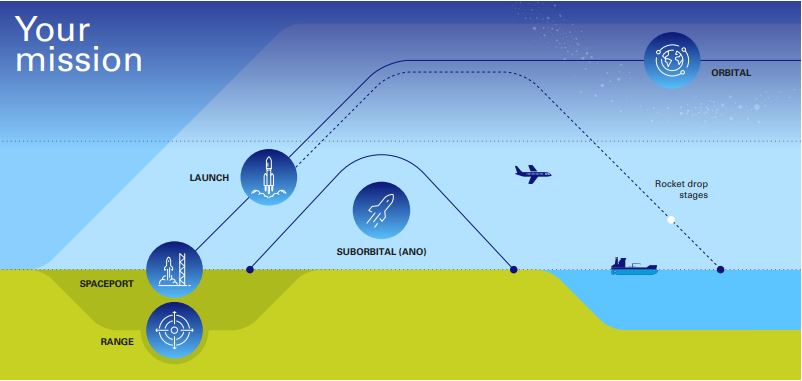Want to be launched into space?
To do so you’ll need a set of licences depending on your planned mission.
For a start you’ll need a Civil Aviation Authority licenced launch vehicle that takes off from a Civil Aviation Authority licenced spaceport. As part of that launch activity a range licence is also needed. This addresses how an operator will mark out, and keep clear, safety zones which may include both areas around the launch site, underneath the initial flight path of a launch vehicle, and areas where rocket sections and debris is planned to fall.
Not only does this come with the massive benefit of making space safer, it is also a legal requirement under the Space Industry Act. Range control services must be provided in support of spaceflight activities. It is a key pillar of the regulation that makes the space sector, a very difficult and hazardous industry, much safer.
What are range control services?
As with fireworks its good practice to stand well clear of a rocket launch. A range control service oversees, clears, and controls a zone to make rocket launches safer.

To be granted a launch licence you need to justify to us that the risks from your spaceflight activities have been reduced as low as reasonably practicable and different techniques and technologies can help, a range service provider may supply some of these. These range services generally fall under five areas – STINC:
Surveillance: Space is hard and during a rocket launch, things don’t always go to plan, and that’s why it is a requirement for hazard areas to be watched carefully. Zones need to be determined where the initial period of launch poses a risk and where parts of the rocket may fall so that they are clear of boats, people, and structures. To keep this area clear boundary boats, cameras and radar systems amongst other techniques may be used.
Tracking: It is important that you know where your rocket is at all times during your mission. To track your rocket there are a variety of methods available such as radar and telemetry, and even advanced automated flight termination systems that mean the rocket knows where it is and can destroy itself safely if it goes off course.
Identification: Marking out hazard areas and defining the flight limits alongside the launch operators’ flight safety analysis. Should a rocket stray off course it can be destroyed safely, reducing the risk to others. This involves assessing the capability of range equipment to help inform safety measures – greater accuracy may mean smaller zones can be used.
Notification: Planes and boats that are likely to be in the surrounding area need to be made aware of any rocket launch. It is essential that notifications are sent out using established notification service providers for example in the UK NATS or the UK Hydrographic Office to ensure all parties are warned of the risks and keep their distance.
Co-ordination: Having clarity over who’s in charge. Making sure there are experts in place to manage a cleared zone and the various tasks that come with that.
As with all our space licensing we are non-prescriptive, we are not going to send you a checklist instead we can work with you to make your space activity safer. You won’t necessarily need to provide all these functions to obtain a licence, but the above information hopefully helps guide the sort of information that is helpful.
If you’d like to find out more about range licences and how to apply then take a look at our website: www.caa.co.uk/space or read more about space licensing here.
News from UK Civil Aviation Authority
- UK Civil Aviation Authority and Ministry of Defence join forces to build pathway into civil aviation for military personnel
- Regulator’s accessibility assistance report highlights progress made by most UK airports but finds three airports need improvement
- Groundbreaking roadmap for aircraft of the future released



Leave a comment
Comments have closed for this blog post.